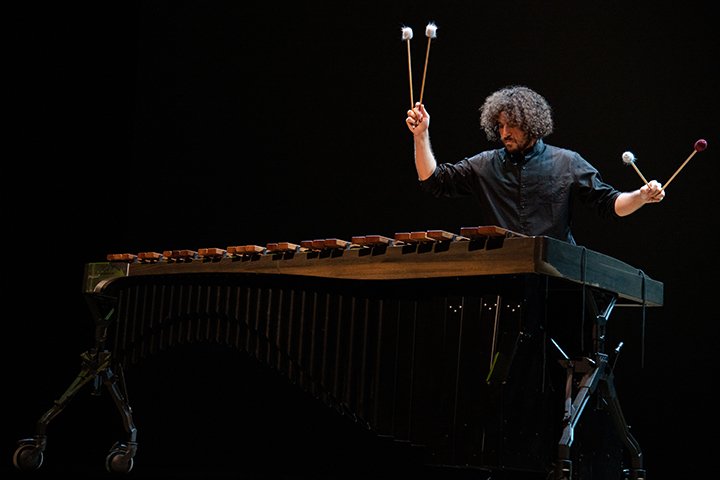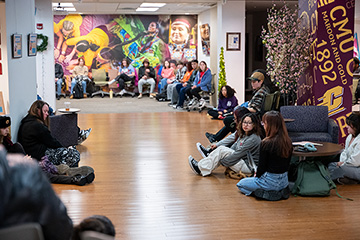Starting with video games, ending with Bach
Big budgets, technology creates new space for CMU music faculty
A Central Michigan University music faculty member is using the popularity of video games to connect people to music in sophisticated ways made possible by technology.
Video game music has been around since the 1970s. However, the growth in technology and budgets has helped the art form catch up with the ability of games to tell stories.
“We’ve come a long way from bleeps and bloops,” said Marco Schirripa, assistant professor of percussion with the School of Music.
It’s also given Schirripa a way to connect his childhood to his work as a music professor.
Schirripa’s primary instrument is the marimba, which is similar to a xylophone. He’s also a member of the Heartland Marimba Quartet, the only professional marimba quartet in the world, he said.
But his real passion is the music that helps make video games an immersive experience.
For Schirripa, the story starts in his childhood, playing video games. A big part of those games was the musical score. Today, that music strikes a nostalgic note for him.
“I hear music from those games, and suddenly it’s 2002 again,” he said.
It also put him on his musical journey that led him to electronic dance music, which took him into minimalist symphonic pieces by composers like Philip Glass. That took him to more traditional classical music like Mozart and Bach.
“If you’re a professional author, you might love Charles Dickens,” he said. “But I guarantee you didn’t fully appreciate Charles Dickens at age 5.”

As he grew and matured, so did the video game industry. The increased popularity of gaming helped funnel more money into development budgets, creating demand for music to help games tell their stories.
In the early days of video game production, one person might develop a game for $8,000. To put it in perspective, the budget for Final Fantasy XVI was more than $300 million and took eight years to make, he said. It featured five composers and required an entire professional orchestra.
Schirripa released Digital Dances, his own album of music inspired by video games, last fall. The music isn’t drawn directly from existing video games but is heavily influenced by them.
The art form is also becoming more relevant in academia. Schirripa said he’s incorporated it into his own teaching.
When he taught music appreciation, he used pieces of music from video games to help communicate musical concepts.
Students who grew up playing video games can easily relate to music that comes from games they’ve played.
He’s getting ready to perform, alongside CMU colleague Matheus Garcia Souza, as part of a duet at the North American Conference on Video Game Music.
“The fact that we have a whole academic conference for video game music is pretty cool,” he said.




